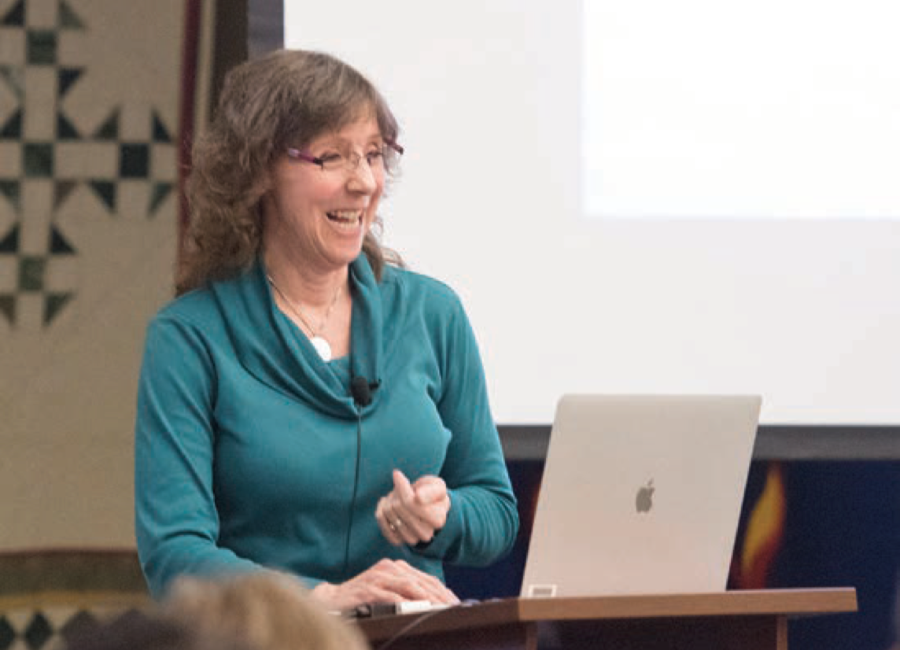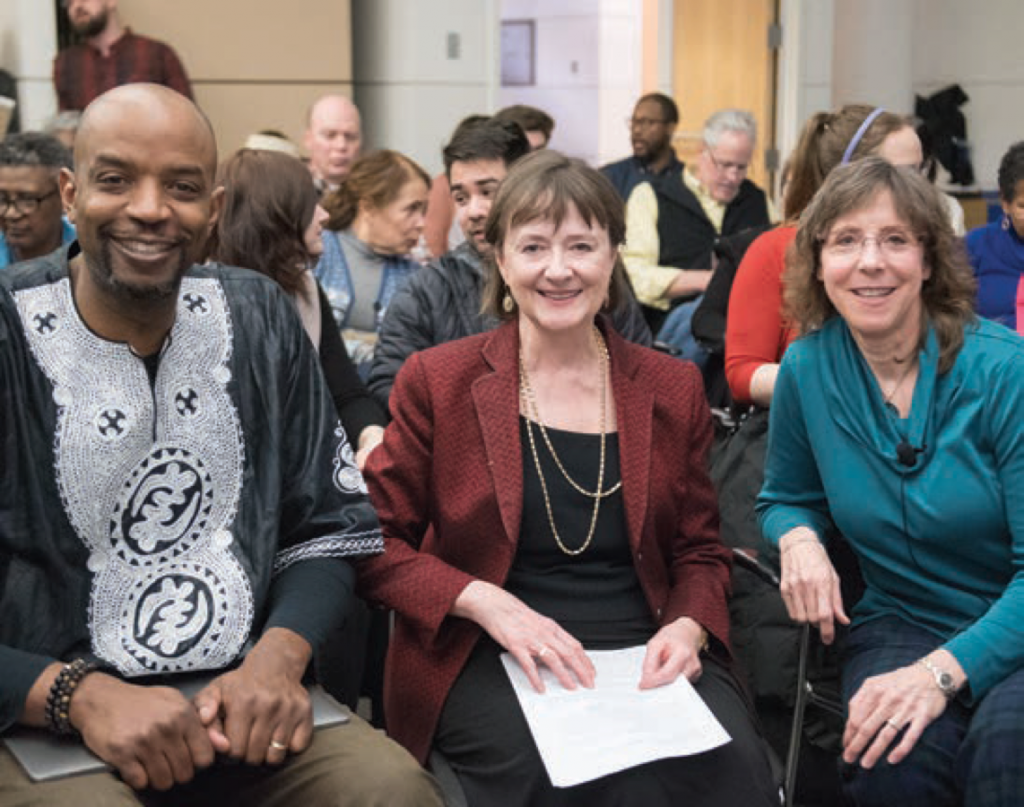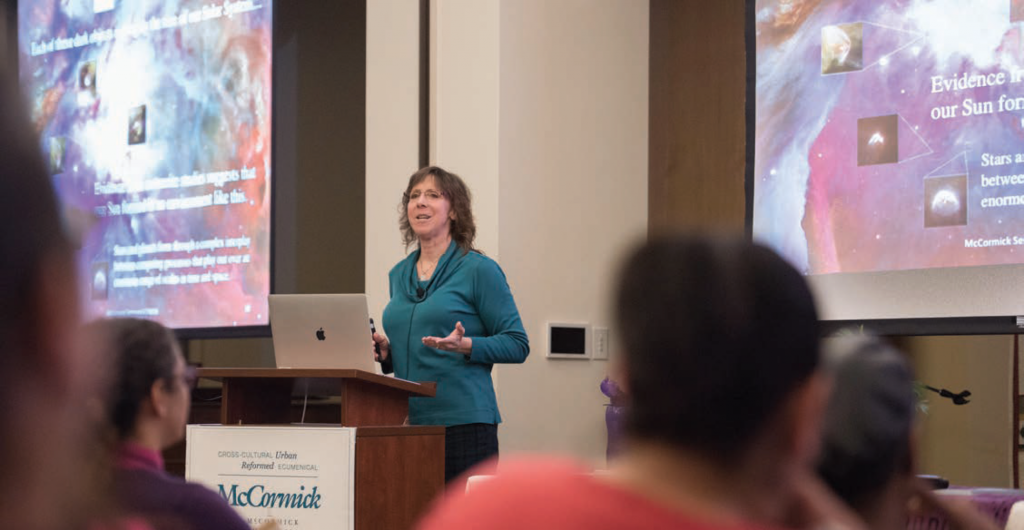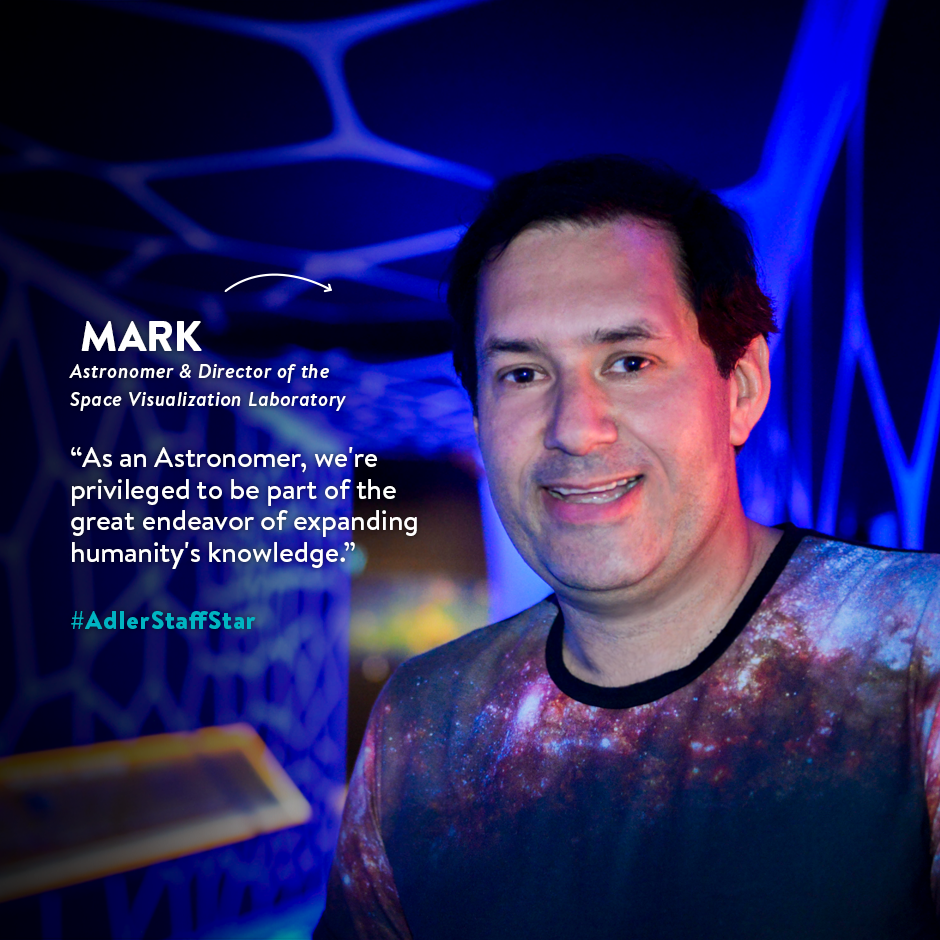Looking Up and Reaching Out

“One of the things I’m passionate about is bridging the culture wars,” Adler Astronomer Dr. Grace Wolf-Chase says cheerfully.
In her office, Grace is rifling through a stack of bright pink foam-board posters featuring portraits of religious people who’ve made great contributions to science. She separates one from the rest. The bearded face on it belongs to Brother Guy Consolmagno, the director of the Vatican Observatory. “And,” Grace adds, grinning, “winner of the Carl Sagan Medal for public communication of science.”
She pulls another poster from the stack: A 19th-century Jesuit priest named Fr. Angelo Secchi.
“And then there’s this fellow here. This was the first person to study the spectra of stars by passing them through a spectroscope, thus turning the science of astronomy into astrophysics, essentially.”
Grace has been a research astronomer at the Adler for more than 20 years. She’s also a prolific writer on space science for religious leaders, a science advisor to three different local seminaries, and a member of several organizations that explore the intersection of science and religion.
Her affection for faith communities—and theirs for her—may seem unusual in a time when so much of the cultural conversation is a loud argument about who belongs where, who is “us,” and who is “them.” There is a pervasive—and, Grace says, ahistorical and wrongheaded—idea that science is a threat to religious people and that serious scientists can’t possibly be religious.

Grace has a lot of practice seeming unusual to others. As a child, she was captivated by the Apollo missions and the promise of other worlds. In a time when traditional gender roles were enforced even more strictly than they are today, Grace was a girl who excelled in math and science, a competitive figure skater who loved Star Trek, and a shy kid who might be quietly developing a plan to jump out of a tree with a homemade parachute. She owned both an Easy Bake Oven and a chemistry set, and she would often combine their powers to fascinating (and probably dangerous) effect. Later, as an undergraduate at Cornell University, she recalls being one of only two women in the entire physics program.
Semi-permanent outsider status has its perks. One is the opportunity to be a human bridge between groups of people who don’t fully understand each other, to show them what they have in common. Today, Grace is a religious scientist who studies the formation of stars and draws on her eclectic personal history to make room in astronomy for people who might feel out of place—especially people of faith.
“There are a number of people in religious communities that see communities of science as a chilly climate for them in the same way that somebody from a different culture or a young girl would,” she says. And allowing them to keep thinking there’s no place for them in science would have the same devastating effect as excluding people because of their race or gender: Countless wonders would go undiscovered, problems unsolved, minds unmet.

“There are truly brilliant scientific minds who are also people of deep religious faith, and they live comfortably with these two sides of themselves,” says Grace. “They see what they do in science as a form of worship.”
Grace sees it that way, too. When she studies images of a previously unknown stage in the life of a star, it’s a religious experience. When she reads a psalm, she thinks about the glittering night sky that would have enraptured its author.
“That awe and wonder is not muted by deepening our knowledge of the cosmos,” she says. “It’s enriched. It makes the whole story just that much richer and grander and more inspiring.”







